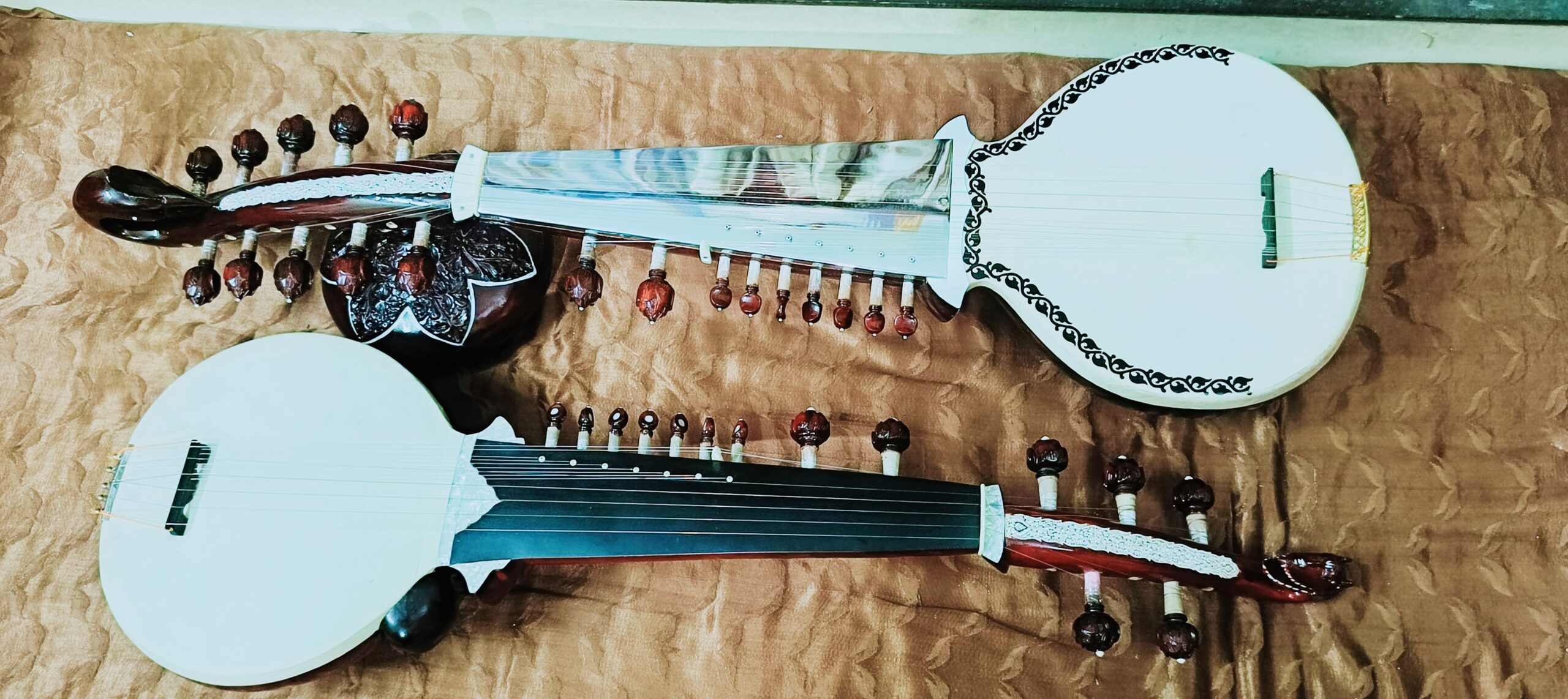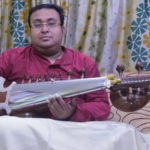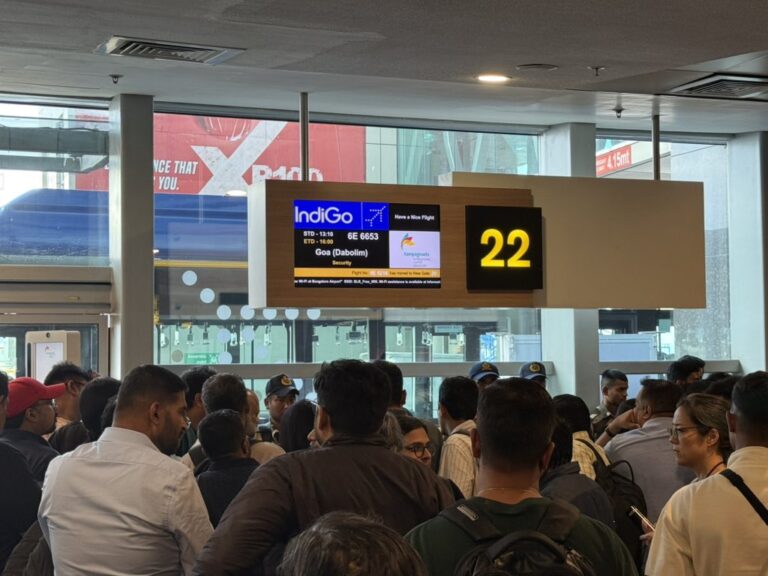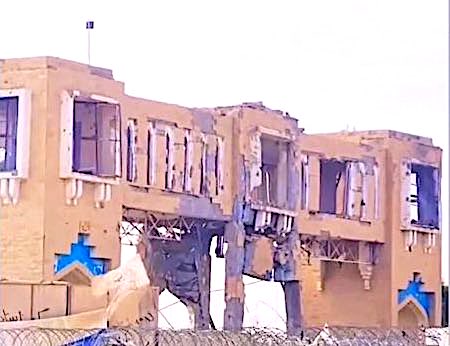
Oplus_131072
Most of today’s performances are led by instruments like tabla, sitar, sarod, santoor, flute, and slide guitars as the performers mainly focus on improving the tonal quality and the sound production of these instruments. Concurrently, most of the instruments like Rabab, Sursingar, Tanseni Rabab, and Dilbahar, which once ruled the royal stages, got relegated to museums rather than being played at the concert stages.
Even though I was a Sarod player, I received training in many other instruments from my Guru, Late Pandit Pranab Naha of Senia Shahjehanpur Gharana. Sursingar was once a very popular instrument but with the development and progression of Sarod, it went to a state of oblivion from the 1960s/70s onwards. I tried to revive Sursingar in a new avatar and bring back this traditional instrument to the stage. Once revived, the instrument received warm acceptance from audiences all across the world and Sangeet Natak Academi bestowed me with their Ustad Bismillah Khan Award for Sursingar & Sarod in 2023 for the year 2019. Immediately after that on 26th February 2023, Prime Minister Narendra Modi not only praised me for reviving Sursingar but also let the people of the world hear a tune in Sursingar played by me on the 98th edition of his radio programme, Mann Ki Baat.
It was during 2016 – 17, when I, as one of the grand disciples of the late Pandit Radhika Mohan Maitra, started to revive some of his instruments to bring those bygone glories back to the performing stage. Pandit Maitra was a multi-instrumentalist who created and developed three musical instruments in his lifetime – The Mohanveena (1943-48), The Dilbahar (1956) and the Nabadeepa (1965). Apart from this, he was an established performer of Sarod, Sursingar and the Afgan Rabab. He died in 1981 at the age of 64 years but much before that, in 1977, he announced his retirement from the professional stage and any kind of performances, interviews and recordings.
It was many years after his death that I tried and successfully revived Mohanveena and Sursingar of the 18th century. After that, I have now successfully revived two other historical instruments – the 16th-century Tanseni Rabab, which was created by the legendary composer, musician and vocalist Mian Tansen, one of the navratnas at the court of the Mughal ruler Akbar, and the Sur-Rabab, a 19th-century instrument which is an amalgamation of the 16th century Tanseni Rabab and 18th-century Sursingar, which was created by Ustad Abdullah Khan of the Shahjahanpur Gharana.
These instruments have very fascinating histories and bringing those instruments back in a revived form in a new avatar was full of challenges. Once the design was finalized and my maker was working on the final touch, I required the recordings of the old masters who played these instruments to get an idea of the original sound and tonal quality of the instrument. It was then that the Ministry of Information and Broadcasting (Prasar Bharati) and Sangeet Natak Academi helped me with archival videos and recordings of these instruments and it helped in the process. I also contacted the Doordarshan and got some documentaries and recordings in its archives like “Mohanveena – a Genesis”.
The process used to revive these extinct instruments
First I had to understand the physical structure of these instruments and I tried to get an idea of what kind of sound quality can be its output. My previous experiences in the revival of some extinct instruments for about 10 years now have given me some ideas on this. There are pictures of Tanseni Rabab in the books and physical instruments are there in some museums which I had to visit. Then I tried to come up with the revived designs of these instruments. Being an engineering graduate, my engineering design skills were an added advantage. What materials I should use, what wood would be better, which kind of strings can give a better tonality, and how the sound production should be done were deeply analysed. Then I sat with my maker, who lives in rural Bengal, and prepared a blueprint. The next few months were just spent on trial and error, testing the potential instruments – cutting, sound box, shaping, creating sample sound with dummy structures.
However, I did make the following changes to the traditional instruments to come out with a modern version of the instrument with the same tonal quality as the age old instruments:
a) Tanseni Rabab:
- Catgut strings are replaced with bronze and copper wires.
- The wooden fretboard is kept but the rosewood fretboard is used for better sound.
- The ablush wood bridge is used instead of ivory as ivory is a restricted item.
- Sympathetic strings made of steel are added to give extra resonance.
b) Sur-Rabab:
- The ablush wood bridge is used instead of ivory as ivory is a restricted item.
- Chikaris and sympathetic strings are added for more resonance.
- Used almost a 100-year-old seasoned mahogany wood block to keep the instrument lightweight and highly sweet sounding with deep tonal quality.
- The peacock head is constructed for beautification and as a symbol of Goddess Saraswati and Shree Krishna and India’s National bird since it’s a “Made in India” product.

Now let me narrate the history of these two instruments.
Tanseni Rabab: This instrument was created by Miyan Tansen some 500 years ago during the 16th century. The Afghani Rabab came to India during the 13th century by the Afghani soldiers of the Mamluk dynasty and then by the Khilji dynasty. Over time, this Middle Eastern instrument was used to play the Indian Raagas by the Indian musicians at that time. However, it was largely a folk instrument. In the 16th century, Mian Tansen developed a special kind of Rabab for Dhrupad Music from this Afghani Rabab. It was longer than the Afghani Rabab and the size was also bigger. It was named Dhrupad Rabab or “Seni Rabab” during his time owing to Tansen’s name. After Tansen’s death, it was called “Tanseni Rabab” by the then musicians, giving credit to the legendary singer. Nevertheless, this instrument continued as a royal stage instrument for the next 250 years till Sursingar arrived in the 18th century, through one of his descendants, Ustad Zaffer Khan. Slowly and gradually, the Tanseni Rabab faded from the classical music scene. Now it’s mostly seen in the museum. There are some old recordings of Tanseni Rabab available in the Akashvani archives of Baba Alauddin Khan and many legends of yesteryear. However, it has completely vanished from the stage now.
Sur Rabab: This instrument was created during the 1880s in Bengal by Ustad Abdullah Khan of Senia Shahjehanpur Gharana by mixing Tanseni Rabab with Sursingar. Since it is an amalgamated instrument of Sursingar with Tanseni Rabab its name has been kept as Sur-Rabab (Sur from Sursingar and Rabab from Tanseni Rabab).
Abdullah Khan, the adopted son of Ustad Murad Ali Khan (who left his ancestral home at Gwalior and migrated to Shahjahanpur), was a master Sarodiya of his time. Even Baba Allauddin Khan and Ustad Hafiz Ali Khan used to take his name while holding their ears. During his time, Sursingar was at its peak as a concert instrument while Sarod was being played mostly by the Rabab players. This great genius musician of Shahjahanpur Gharana conceptualized this SUR RABAB instrument imbibing three instruments together – SUR SINGAR, SAROD & TANSENI RABAB. During the later half of the 19th century, around the 1880s, when Ustad Abdullah Khan was in Calcutta, he developed the first SUR-RABAB. It soon became a very successful instrument of his but somehow it was damaged in 1910 during one of his All India Music tours. He created the 2nd one in 1911 in the workshop of Harendra Nath Sil in Calcutta and passed it to his son, Ustad Mohammad Ameer Khan during 1911. Ameer Khan passed this instrument to his disciple Pt. Radhika Mohan Maitreya in 1933 before he died in 1934. After Pt. Maitreya, the original instrument (in insalubrious condition, last repaired in 1941) is in the possession of Somjit Dasgupta, managing trustee of Pt. Radhika Mohan Maitreya Memorial Trust.
Also read: Reviving the forgotten instruments of Indian music – 4
I have to popularize Tanseni Rabab and Sur Rabab now. I need to continue the momentum of popularizing Sursingar and Mohanveena of Radhika Mohan Maitreya. I need to reach out to more and more people and popularize these instruments among the youth and music lovers. Classical Music is not rocket science, you only need to attract the present-day audience and it’s possible. I am on this mission. I need to re-establish these two instruments now after 100 years. These are my priorities.






